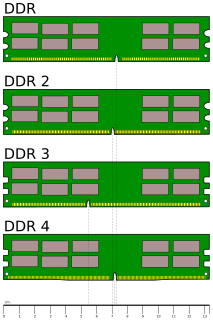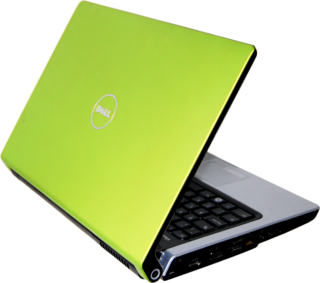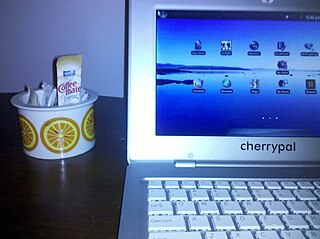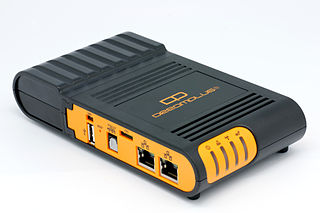
The Open Desktop Workstation, also referred to as ODW is a PowerPC based computer, by San Antonio-based Genesi. The ODW has an interchangeable CPU card allowing for a wide range of Power Architecture based microprocessors from IBM and Freescale Semiconductor.

PowerPC is a reduced instruction set computing (RISC) instruction set architecture (ISA) created by the 1991 Apple–IBM–Motorola alliance, known as AIM. PowerPC, as an evolving instruction set, has since 2006 been named Power ISA, while the old name lives on as a trademark for some implementations of Power Architecture-based processors.

Genesi is an international group of technology and consulting companies in the United States, Mexico and Germany. It is most widely known for designing and manufacturing ARM architecture and Power ISA computing devices. The Genesi Group consists of Genesi USA Inc., Genesi Americas LLC, Genesi Europe UG, Red Efika, bPlan GmbH and the affiliated non-profit organization Power2People.
A CPU card is a printed circuit board (PCB) that contains the central processing unit (CPU) of a computer. CPU cards are specified by CPU clock frequency and bus type as well as other features and applications built into the card.
Contents
It is a standardized version of the Pegasos II. It was the first open source based PowerPC computer and gave PowerPC a host/target development environment. Genesi have released the complete specification (design and component listing) free of charge. The ODW-derived Home Media Center won the Best in Show award at the Freescale Technology Forum in 2005. [1] It also features an ATI certification [2] and a "Ready for IBM Technology" certification. [3]

Pegasos is a MicroATX motherboard powered by a PowerPC 750CXe or PowerPC 7447 microprocessor, featuring three PCI slots, one AGP slot, two Ethernet ports, USB, DDR, AC'97 sound, and FireWire. Like the PowerPC Macintosh counterparts, it boots via Open Firmware.
It supports a variety of operating systems such as MorphOS, Linux, QNX and OpenSolaris. Manufacturing of the ODW have been discontinued in favour for EFIKA.
MorphOS is an AmigaOS-like computer operating system. It is a mixed proprietary and open source OS produced for the Pegasos PowerPC processor based computer, PowerUP accelerator equipped Amiga computers, and a series of Freescale development boards that use the Genesi firmware, including the Efika and mobileGT. Since MorphOS 2.4, Apple's Mac Mini G4 is supported as well, and with the release of MorphOS 2.5 and MorphOS 2.6 the eMac and PowerMac G4 models are respectively supported. The release of MorphOS 3.2 added limited support for PowerMac G5. The core, based on the Quark microkernel, is proprietary, although several libraries and other parts are open source, such as Ambient desktop.

Linux is a family of free and open-source software operating systems based on the Linux kernel, an operating system kernel first released on September 17, 1991 by Linus Torvalds. Linux is typically packaged in a Linux distribution.

QNX is a commercial Unix-like real-time operating system, aimed primarily at the embedded systems market. The product was originally developed in the early 1980s by Canadian company Quantum Software Systems, later renamed QNX Software Systems and ultimately acquired by BlackBerry in 2010. QNX was one of the first commercially successful microkernel operating systems and is used in a variety of devices including cars and mobile phones.














